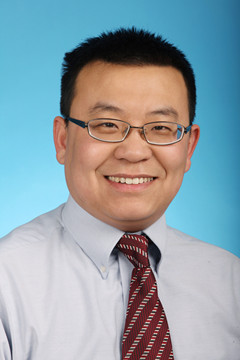
Kai Chen
Professor of Xian Jiaotong University
kchenlbl@gmail.com || kc_xjtu@xjtu.edu.cn

Kai Chen
Professor of Xian Jiaotong University
kchenlbl@gmail.com || kc_xjtu@xjtu.edu.cn
2001-2005 Peking University, Bachelor
2005-2009 University of California, Los Angeles, Doctor
2007-2011 Lawrence Berkeley National Laboratory, Research Assistant, post-doctor
2011-present Xian Jiaotong University, Associate Professor and Professor
2013-present Shanghai Synchrotron Radiation Facility, Member of the Expert Group
Prof. Kai Chen has extensive experience and a solid theoretical foundation in the development of software and hardware for scanning synchrotron microbeam X-ray diffraction microscopy imaging technology, as well as in the analysis of massive data. As a key member, he participated in the construction of the first scanning synchrotron microbeam X-ray diffraction microscopy beamline at Lawrence Berkeley National Laboratory in the United States, where he was responsible for designing and developing the in-situ heating and electrical testing stages for the beamline. Using these, he studied the evolution of microstructure and stress in solder under the coupling of electrical and thermal effects, and conducted research on the reliability and failure mechanisms of flip-chip devices. At the Shanghai Synchrotron Radiation Facility, he established China's first microbeam white light Laue diffraction beamline, achieving full independent intellectual property rights for the development of data acquisition and analysis software for the beamline, with research findings featured on the cover of Science China Materials. He was the first in the world to achieve uniaxial tensile testing of a single nanowire on a scanning synchrotron microbeam X-ray diffraction microscopy beamline. By comparing the intensity ratios of Laue diffraction peaks, he accurately calibrated the Laue diffraction spectra of Dauphine twinning in quartz crystals. He developed a set of data analysis software for automatic calibration and analysis of massive Laue diffraction spectra, mapping grain boundaries, twin boundaries, and sub-boundaries by calculating the orientation differences between grains. Proficient in the theoretical knowledge of in-depth data mining of Laue diffraction, he has studied the distribution of dislocation defects in various types of crystalline materials. He developed a "Multicolor/Monochromatic X-ray Combined Single Crystal Stressometer," optimizing both "efficiency" and "accuracy" in single crystal stress-strain measurements, which passed a performance test review on January 21, 2024. He revealed the competitive mechanism between recovery and recrystallization, tailoring recovery heat treatment systems for different plastic deformation modes, significantly improving the critical plastic deformation for recrystallization. He also revealed the impact mechanism of melt pool morphology and dynamic behavior on grain structure, achieving control of grain structure from single crystal to near-equiaxed fine grains, suppressing cracks, and stabilizing grain structure through customized heat treatment while releasing stress.
Research Fields: